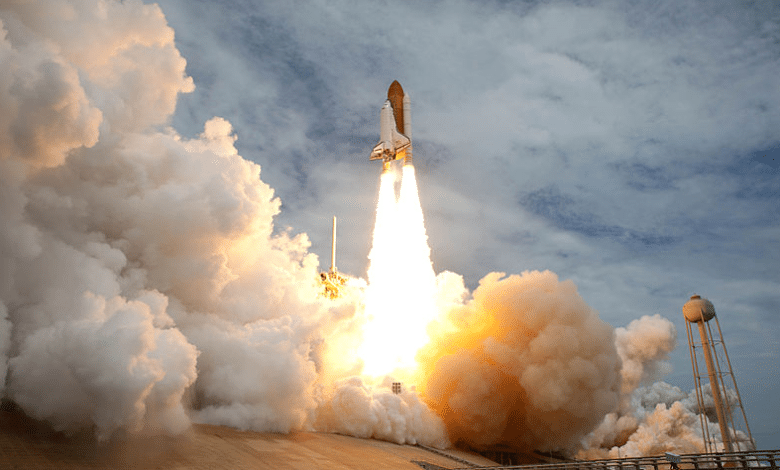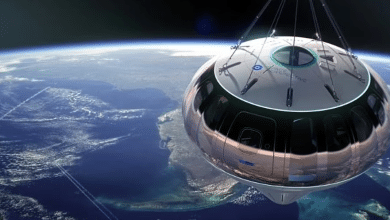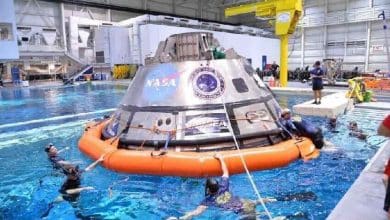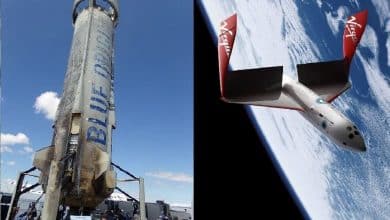How does the carbon footprint of space tourism compare to that of other forms of tourism?

In this article you will know about the carbon footprint of space tourism. Even though former Virgin Galactic CEO Richard Branson has already gone 53 miles (85 kilometers) into suborbital space, Amazon founder Jeff Bezos does not appear happy that Branson has similarly taken some of his thunder
Bezos has a self-funded trip to the area planned for July 20, as does Branson. A document published by Bezos on the effects of Blue Origin’s launching on the ozone layer included information about how its launching on Blue Origin was compared to Virgin Galactic’s.
There is a fine print at the bottom of this page that indicates that a liquid hydrogen/liquid oxygen rocket engine (such as the one used by Blue Origin) reduces the amount of ozone lost by 100 times and contributes 750 times fewer global warming emissions than a hybrid air-launched engine (such as the one used by Virgin Galactic).
What is the impact of a flight on the environment? As neither Blue Origin nor Virgin Galactic has been transparent about their carbon footprints, it is impossible to know with certainty what they are in terms of their carbon emissions.
One space flight emits more carbon dioxide than the total amount that most people will talk about throughout their lifetimes when combined, according to the World Inequality Report published in 2022.
The researchers included a statistic spotted on social media that perfectly illustrates the direct correlation between those who generate greenhouse gases and those who are affected by them, in addition to discussing labor, income and economic inequality discussed in the paper.
The purpose of this post is to provide you with a brief overview of the carbon footprint of space tourism for those who might be interested in knowing more.
Obviously, this is a very messed up situation, so if we don’t think too hard about it, we won’t have to think about it too much. Despite Bezos’s public claim that his Blue Origin flight emitted carbon dioxide, according to the first search result on Google (allegedly a fact-checking website, Politifact), the flight ran on liquid hydrogen and oxygen instead of carbon dioxide.
While hydrogen does not directly emit CO2 when burned, rocket fuel is still relatively energy-intensive, even though it does not produce CO2.
The standard process of producing hydrogen involves using natural gas to make hydrogen, and it is necessary to purify and compress oxygen to produce hydrogen.
It would be inspiring news to send Jeff Bezos away from Earth without releasing any energy.
In the long run, what impact will space tourism have on society?
Apart from the apparent fact that rocket fuel (even if it’s hydrogen) is expensive and has many other impacts, many different aspects of rocket launches still need to be understood entirely.
It is also important to note that the high temperatures present during launch and re-entry also make it possible for the stable nitrogen in the air to be converted into reactive nitrogen oxides (which burn up the protective heat shield of the returning craft when it returns).
Gases and particles can negatively affect the atmosphere, and many factors cause these effects.
When water vapor breaks down in the stratosphere, nitrogen oxides and chemicals are produced, which convert ozone to oxygen and cause the ozone layer to lose its ability to protect life from ultraviolet light.
Space tourism, in this way, impacts the environment more than the 200-300 tonnes of CO2 that may be emitted by launching a rocket carrying four tourists into space. The ozone-depleting nitrogen oxides and the mountains of hardware (material waste, electronics, conflict minerals, etc.) involved with the manufacturing process are just some of the factors to consider. As a result, children are distracted from real global issues, which has a much broader impact on society.
A lack of space tourism would allow scientists to devote more time to researching more pressing issues that could be addressed if there was no space tourism industry. It is important to note that Dr. Marais’ research group (as well as others) is performing an essential service by researching the impact of space tourism. The researchers might have been able to focus more on other issues related to climate change rather than exploring space tourism instead.
Before the CFCs were banned, scientists spent decades researching the dangers of CFCs, so you would think we would have learned our lesson by now. The burden of proving that new technologies or ingredients, such as microbeads, hurt humans and the environment lies with governments and public-funded scientists.
Putting the carbon footprint of space flight into context
When rocket fuel is considered the only aspect of space tourism that impacts the carbon footprint, it can be estimated that approximately 100 tonnes of carbon dioxide are produced per person. In the case of those paying Elon Musk’s SpaceX $55 million a month to stay at the International Space Station, the cost of staying there will be much higher. A 10-minute flight by Blue Origin or Virgin Galactic has roughly the same carbon footprint as a 25-year life on this planet.
Globally, it has been estimated that the average carbon footprint is somewhere between 4 and 5 tonnes of CO2. If we are to avoid a rise in global temperatures of 2°C by 2050, then the amount of carbon dioxide emissions from the world must drop below 2 tonnes per year.
Therefore, we should be at most two tonnes of carbon emissions annually. It can be estimated that the amount of oxygen that space tourists consume in just a few minutes will be 50 times greater than that. In addition to this, other atmospheric impacts (which are still unknown) and material footprints are not included in this study.





